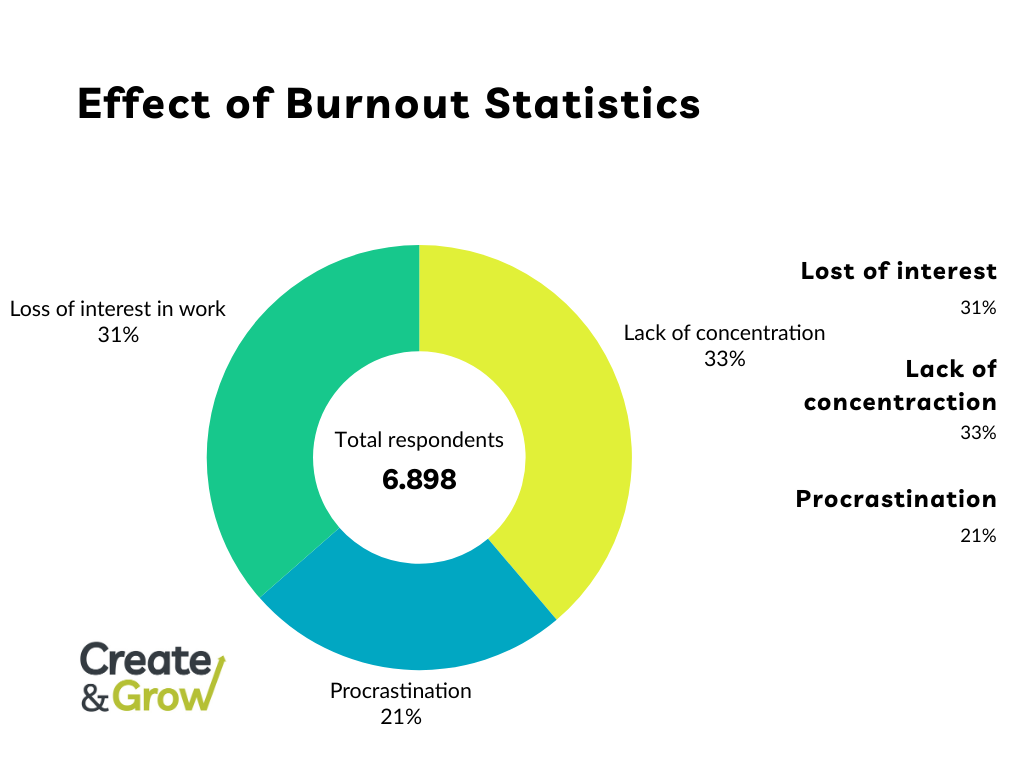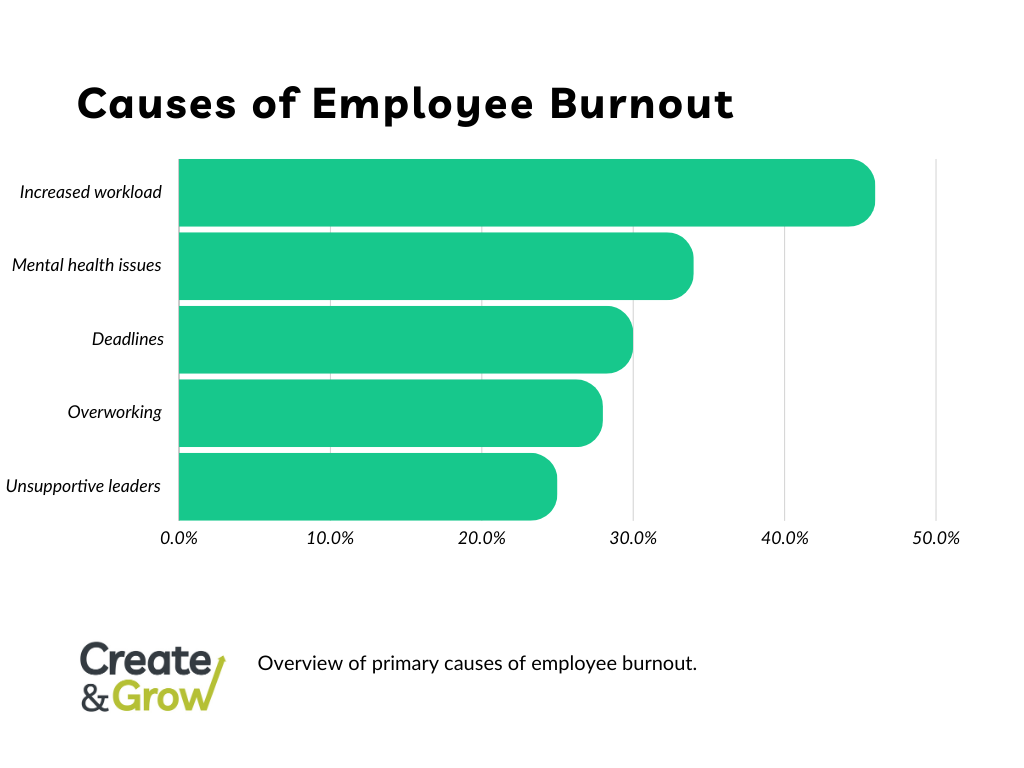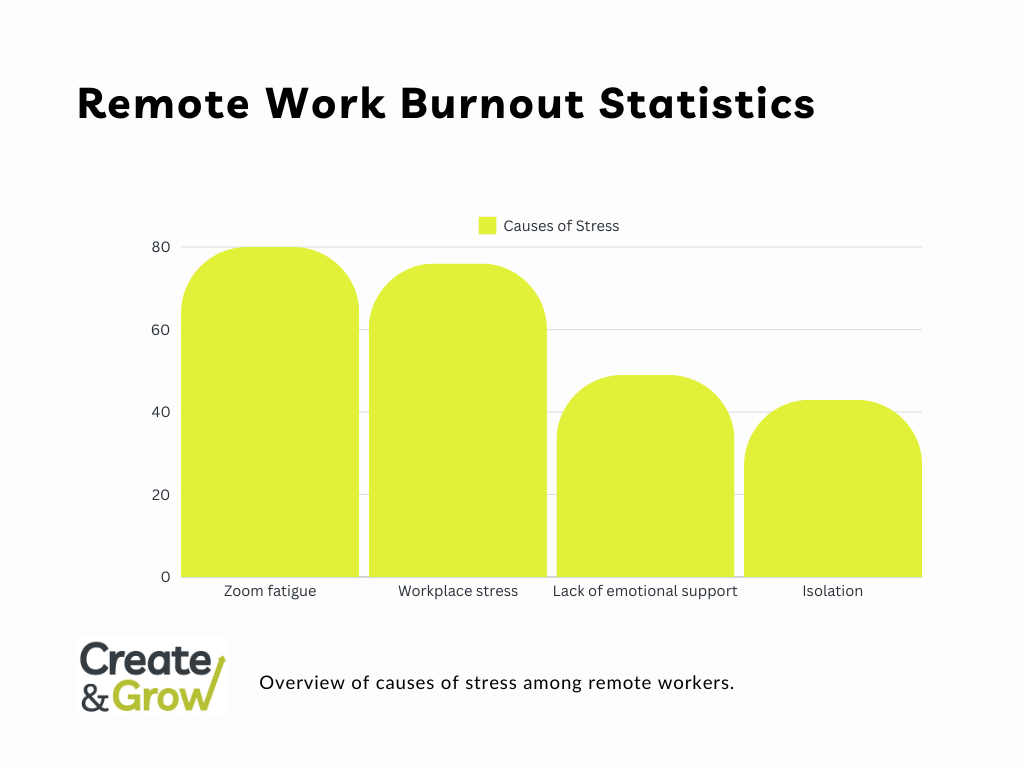Top Burnout Statistics for 2024
- At least sometimes, workplace burnout affects 76% of employees, equivalent to 3 out of 4 individuals. (Source: Gallup)
- 77% of workers have encountered burnout in their current jobs, with the primary factor being a lack of support and recognition from leadership. (Source: Deloitte Research)
- A total of 33% of workers express a decline in concentration due to burnout, with 31% indicating a loss of interest in their tasks, and 21% report increased procrastination based on the study of 6, 898 employees. (Source: Dayforce)
- Interestingly, a greater percentage of women leaders (43%) report experiencing burnout in comparison to men at their level (31%). (Source: McKinsey)
- Merely 2.7% of individuals reported a burnout level of 0%. (Source: Reclaim)

Burnout Statistics Worldwide
UK Burnout Statistics
- 91% of adults in the UK reported experiencing high or extreme levels of pressure or stress at some point in the past year. (Source: Mental Health UK)
- One in five UK employees need to take time off work due to poor mental health resulting from pressure or stress. (Source: Mental Health UK)
- A total of 38.9% of UK professionals report feeling exhausted, with 29.9% of employees indicating that long working hours contribute to their fatigue. (Source: CV Library)
- Nearly half, or 46%, of individuals believed that poor physical health could be a factor contributing to burnout. (Source: Mental Health UK)
- The primary causes of employee burnout, as reported, include increased workload (46%), mental health challenges (34%), pressure to meet deadlines (30%), working too many hours (28%), unsupportive leaders (25%). (Source: Dayforce)

USA Burnout Statistics
- A total of 89% of Americans have experienced burnout. (Source: Visier)
- Millennial employees, at 59%, are the most commonly affected group by burnout, followed by Gen Z at 58%. (Source: Indeed)
- Actively disengaged employees result in a staggering $8.8 trillion loss in global productivity. (Source: Gallup)
- Even well beyond the COVID-19 pandemic, an estimated 35% of Americans will be working from home by 2030. (Source: Pew Research Center)
- The annual average cost of workplace stress to the US economy is $300 billion. (Source: The American Institute of Stress)
Europe Burnout Statistics
- When it comes to age, Europeans aged between 25 and 34 emerge as the most vulnerable group, with 72% experiencing the burnout. (Source: STADA)
- In a study of 12,000 employees across 11 European countries, Irish workers were found to experience burnout and stress more frequently than their peers. (Source: Work Human)
- Approximately half of European workers indicate exposure to psychosocial risks (PSR) in their workplaces. (Source: Social Europe)
Employee Burnout Statistics
- Negative impacts of work-related stress are reported by 3 in 5 employees. (Source: APA)
- A notable 70% of professionals feel that employers are not doing enough to prevent and alleviate burnout. (Source: Deloitte)
- In a recent survey by Westfield Health, 59% of employees identified their mental health as a significant motivator for seeking a new role. (Source: Westfield Health)
- 83% of professionals acknowledge that burnout from their work can have a negative impact on their personal relationships. (Source: Deloitte)
- Popular well-being support options among respondents include flexible working hours (41%), time-off respecting culture (34%), the option to work remotely (33%). (Source: APA)
- Employees who have the chance to excel in their strengths are 57% less prone to experiencing burnout. (Source: Van Ede)
Stress at Work Statistics
- 80% of workers experience job-related stress, with nearly half expressing the need for assistance in managing stress. (Source: APA)
- 44% of respondents reported experiencing a high level of stress on the day before the survey. (Source: Gallup)
- 79% of participants recognized stress-related absences within their organization in the past year. (Source: CIPD)
- Over three-quarters (76%) of respondents acknowledge that workplace stress impacts their mental health. (Source: Flex Jobs)
- Job stress exhibits a stronger association with health complaints compared to financial or family issues. (Source: APA)
World Health Organization Burnout Statistics and Facts
- During the pandemic, burnout among health and care workers ranged from 41% to 52% in pooled estimates. (Source: WHO)
- More than 40% of full-time desk-based workers reported experiencing burnout, as defined by the WHO. (Source: CNBC)
- Burnout can be attributed to factors such as excessive workload, insufficient support, poor work-life balance, lack of autonomy, and an unfavorable organizational culture. (Source: Ambr)
Burnout Statistics by Industry and Profession
- The healthcare sector (82%), services, tourism, and restaurants sector (82%), the construction and real estate sector (77%), financial sector (56%) are most prone to reporting burnout. (Source: Emolument)
- A significant 62.2% of salespeople experience burnout due to a lack of time for focused work. (Source: Reclaim)
- Over 50% of teachers experience burnout within the initial five years of their teaching careers. (Source: Present Teacher)
- Healthcare workers are facing significant stress and burnout, with rates reaching up to 70%. (Source: National Institutes of Health)
Workplace Burnout Statistics by Demographic
- A significant 68% of Gen Z and younger millennials consistently report feeling stressed. (Source: Gallup)
- Almost half (48%) of individuals aged 18 to 29 reported feeling drained, compared to 40% of their peers aged 30 and older. (Source: CNBC)
- Job demands and the work environment have led to burnout for 46% of Gen Z employees and 45% of millennials. (Source: Deloitte)
- The primary reason for burnout, cited by 40% of millennials, is a lack of free time. (Source: Indeed)
- 84% of Gen Z individuals report experiencing burnout, along with 74% of Millennials, and 47% of Baby Boomers. (Source: Forbes)
Remote Work Burnout Statistics
- The mental health of 76% of remote workers is influenced by workplace stress. (Source: Flex Jobs)
- 4 out of 5 workers are currently dealing with Zoom fatigue. (Source: People Matters)
- Almost half (49%) of remote workers report a lack of emotional support. (Source: Flex Jobs)
- 43% of individuals concurred that experiencing isolation could contribute to burnout. (Source: Mental Health UK)

Frequently Asked Questions


